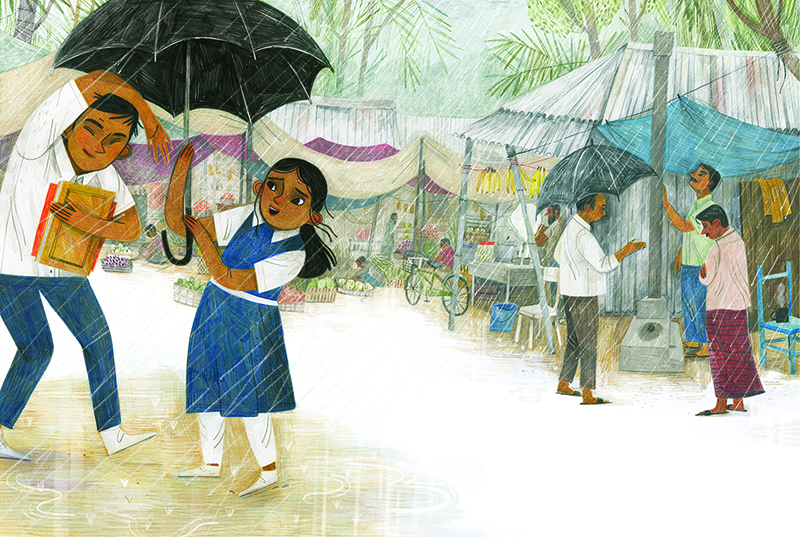
Illustration by Green for Iqbal and His Ingenious Idea: How a Science Project Helps One Family and the Planet by Elizabeth Suneby.
In this limited series, Design Observer features conversations with creatives from the inventive, implacable, cultural melting pot that is Nashville, Tennessee. In her new book Word of Mouth: More Conversations, author Lily Hansen takes conversation with others from chore to professional vocation, and as author and oral historian Studs Terkel put it, talks with creative people “about what they do all day and how they feel about what they do.”
We selected four such conversations—with illustrator Rebecca Green, apparel and shoe designer Phillip Nappi, photographer Jeremy Cowart, and tattoo artist Elisheba Israel—to enlighten us as to what they do, why, and how they found their creative voice within that unique fabric that is the Music City.
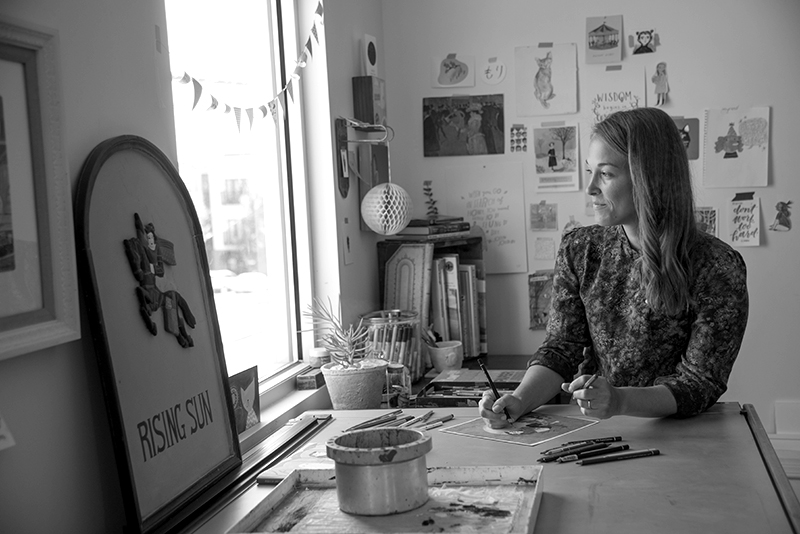
Portrait of Rebecca Green for Word of Mouth: More Conversations by Ron Manville.
Children’s book illustrator Rebecca Green ironically does not spend much time with kids, yet she makes tapping into the imagination look effortless. Small details make a huge difference in the artist’s productivity, which was the incentive for her co-working space, The Warren, which she opened in 2016. As someone who leads a solitary professional life, Green needed the camaraderie of working alongside other creatives. After growing up in a practical, working-class Michigan town, she went the opposite route by choosing to study photorealism painting.
Post-graduation, she pursued illustration—an industry where she could explore worlds, create characters, and stay connected to that sense of wonder we adults tend to abandon. Her style—a hybrid between realism and stylized fictional settings—quickly attracted the attention of publishers around the world. Over the last few years, Green has achieved her dream of having an art director hand over a script and say, “We trust you to do your thing.” The illustrator, whose business mostly comes from her Instagram following, describes the life of a modern-day artist.

Illustrations for How to Make Friends with a Ghost, a book Green also wrote.
What was the first job where you really got the space to be yourself?
I was hired for a book, The Unicorn in the Barn, which an art director specifically sought me out for. I was so passionate simply because I loved the story so much. Also, I have a book that I wrote and illustrated totally on my own, How to Be Friends With A Ghost. It was a dream come true to have someone publish a project that is solely mine.
What is your process for creating a character?
I concentrate a lot on posture and their style of dress. Details, like the thickness of their eyebrows, are of the utmost importance. Everything comes down to physical expression, and it can take me 30 times to get a feature right. There’s a fine line between someone looking nervous and annoyed.
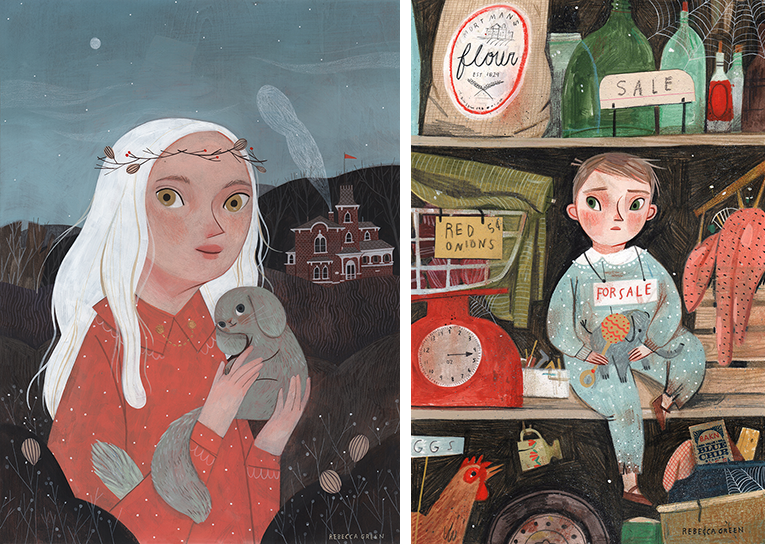
Images left to right: "In the Hills of Melgadine" and "Henri." Illustrations by Rebecca Green.
Do your characters have a certain look?
My recent work fits into this French-Canadian-European sector, which is what I’m drawn to. It’s hilarious though, because I’m not well-traveled at all.
How did you develop your own style?
I had a professor who told me once, “In your style, you can have evolution or a revolution.” Mine has been a slow progression from photorealism to my current style of line drawing. I apply all of the traditional techniques I learned in photorealism painting to my illustrations and sometimes have a hard time turning that part of my brain off. My goal is to always draw from my heart.
My goal is to always draw from my heart.
How do you come up with your rates?
I think it’s so important to talk to others about how much they think your work is worth. Next, factor your materials and time into the equation. I always want to hear what a client’s budget is first. Even if they give you a low offer, you can usually move the number up if they really want to work with you. Still, developing your pricing scale is always a work-in-progress. You have to feel like you’re getting paid fairly, otherwise you lose interest in the project.
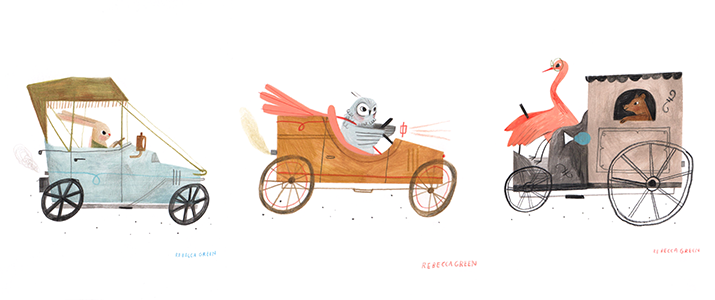
Images left to right: "Miss Henrietta Tinkton," "Scoot Midley," and "Lloyd Pilton & Tully John." Illustrations by Rebecca Green.
What’s been your biggest lesson learned?
It took me a while to be at peace with the fact that I can’t and don’t want to do every job I’m offered.
What’s your barometer for accepting a job?
Asking myself, “Does this job get me closer to my ultimate goal or pull me away from it?” You have to figure out what you’re best at, fast at, and want to be doing. When you achieve it, that’s the best feeling in the world.
“Does this job get me closer to my ultimate goal or pull me away from it?” You have to figure out what you’re best at, fast at, and want to be doing.
What is your favorite thing about your job?
Every project feels new and like a learning curve. While constantly adjusting myself can feel like a struggle at times, it’s also the reason for my advancement. My work rarely feels stale or stuck.
This interview has been edited for length. Read the full interview in Word of Mouth: More Conversations.
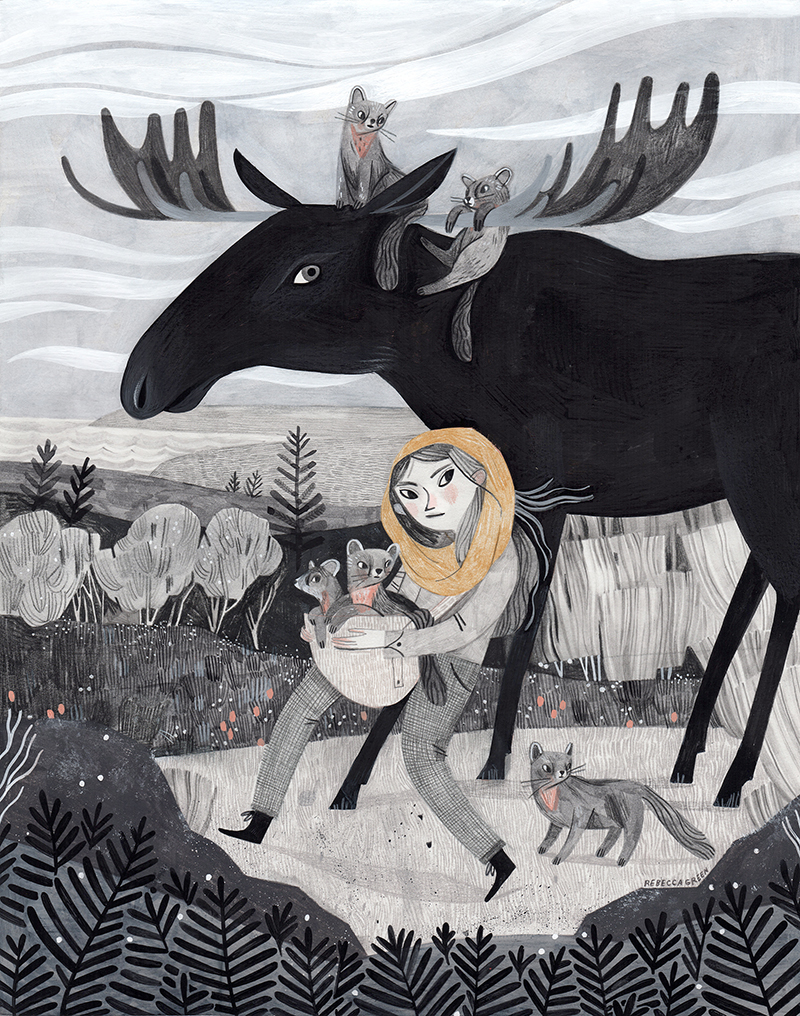
"The Great Cape Breton Escape." Illustration by Rebecca Green.
